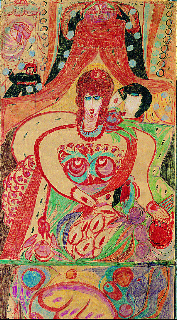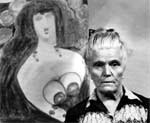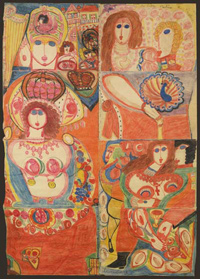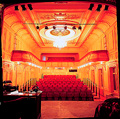 |
AloÏse OpÉraA chamber opera based on the life of the 'Outsider Artist' ('Art Brut') Aloïse Corbaz (1886-1964)« Aloïse : C’est beau le rouge,
|
Aloise: From imprisonment to inner liberation
Aloise Corbaz (1886-1964) was born in Lausanne in the Swiss French Canton of Vaud. One of the most productive and important 'Outsider Art' ('Art Brut') painters, she originally wanted to be an opera singer. She studied voice and the opera repertoire but the cultural environment, education, religion as well as social life of the time prevented her from pursuing this kind of profession.
 Aloise received an education as a seamstress and then, owing to her good general education, became a governess in affluent families. In order to avoid a scandal, her older sister ended Aloise's early affair with an ex-minister. Aloise was sent to work as a nanny at the house of Wilhelm II in Potsdam, remaining there until 1913, when, before the outbreak of the First World War, she returned to Lausanne. Here, she began to show the first symptoms of schizophrenia. She was committed to the psychiatric asylum in Cery in 1918, and then transferred in 1920 to La Rosière, a psychiatric institution for the chronically ill in Gimel (near Lausanne) where she lived until her death in 1964.
Aloise received an education as a seamstress and then, owing to her good general education, became a governess in affluent families. In order to avoid a scandal, her older sister ended Aloise's early affair with an ex-minister. Aloise was sent to work as a nanny at the house of Wilhelm II in Potsdam, remaining there until 1913, when, before the outbreak of the First World War, she returned to Lausanne. Here, she began to show the first symptoms of schizophrenia. She was committed to the psychiatric asylum in Cery in 1918, and then transferred in 1920 to La Rosière, a psychiatric institution for the chronically ill in Gimel (near Lausanne) where she lived until her death in 1964.
During her internment, after a first phase of aggression and autism, Aloise began to draw. Gradually her creative techniques transformed and reorganized her inner world through her extraordinary pictures.
This opera and the three main phases of Aloise's development
 Her youth, the (tragic) love affair, her idealism, the lost dreams;
Her youth, the (tragic) love affair, her idealism, the lost dreams;- Her autism at the beginning of her internment;
- Her 'inner liberation': Through painting and drawing, the development of a creative light, the expression of a 'new world' as opposed to the real 'world from earlier'.
The role of Aloise is divided among three female voices, which represent the different states and epochs of her artistic awareness. The single male role represents 'man' per se, appearing here in all the facets from real life to those of Aloise's imagination (the lover, the father, Napoleon, Christ, William II, etc.).
The libretto is based almost entirely on the poetic texts, divorced from external reality and written by Aloise herself. The staging does not present a typical theatrical life story but rather attempts to represent Aloise from a subjective viewpoint.

